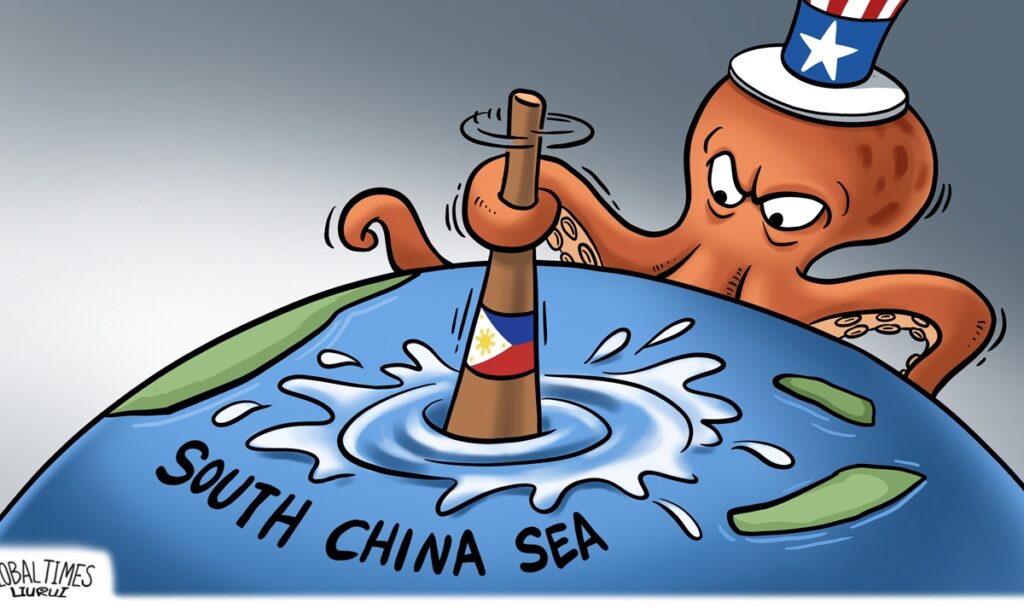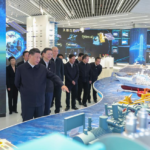Since the beginning of this year, from Western and US journalists accompanying Philippine vessels to Ren’ai Jiao for provocation and staged performances, to the US reportedly assisting Manila in repairing the illegally grounded warship, and the US and the Philippines are conducting joint patrols in an area approximately 200 kilometers away from Taiwan, as well as Washington repeatedly using the Mutual Defense Treaty to make empty promises to Manila, it is not difficult to see that the US has gradually ratcheted up its instigation on the Philippines. The US warship’s illegal intrusion into Ren’ai Jiao was the latest escalation, clearly aimed at boosting the morale of the Philippines and encouraging Manila to be “bolder.” By using “security” to deceive Manila, Washington is pushing it closer to the front line.
Will the US military really support the Philippines? This time, the US has dispatched a littoral combat ship, a type of vessel known for its weak combat capabilities and high speed. In plain terms, it is a pure act of provocation and testing. However, this irresponsible provocation can easily lead to a misjudgment from the Philippines. They might believe that the US will back them up and, under this imagined support, may even undertake risky actions at any cost, significantly escalating the risk of friction and conflict.
The issue of Ren’ai Jiao is a bilateral matter between China and the Philippines, which has nothing to do with the US. For a long period in the past, China and the Philippines effectively managed the situation at Ren’ai Jiao through good communication and reached a mutual understanding. Following this direction, it is entirely possible for the issue to be peacefully resolved and accepted by both sides. However, the US chose to get close to and lull the Philippines during the crucial stages of the negotiation on a Code of Conduct (COC) for the South China Sea and a period of political change in the country, which has given the Philippines unrealistic fantasies. It is evident to everyone that the US involvement in the Ren’ai Jiao issue is not well-intentioned.
Fantasy is like a soap bubble; no matter how colorful it may appear, it will eventually burst. Over the past few months, the Philippines has made various moves at Ren’ai Jiao, displaying a variety of actions with considerable fanfare. However, these actions have not yielded any benefits and have instead had a detrimental impact on China-Philippines relations. To prevent the Philippines from backing down, the US military has stepped in. This is not only the US military being arrogant or reckless in the South China Sea but also a way to maintain tension at Ren’ai Jiao and encourage and manipulate the Philippines. The Philippines should not be so naive to think that the US is genuinely helping it. The US aims to intoxicate the Philippines, leading it to sacrifice itself on behalf of American interests. While US warship provocatively challenged China at Ren’ai Jiao, it is also pouring a large glass of strong liquor down the throat of the Philippines. Hopefully, the Philippines has not been intoxicated by these actions.
Faced with disturbances from the US and the Philippines, China only needs to resolutely safeguard its national sovereignty and territorial integrity. The stranded warship is already in a dilapidated state, and we must staunchly prevent the Philippines from taking reinforcement measures. Once it disintegrates, the Philippines will lose an excuse. Following our own pace, we continuously enhance our law enforcement and management capabilities in the Ren’ai Jiao area, placing us in an unbeatable position.
Furthermore, the Chinese side will undoubtedly make comprehensive preparations, demonstrating a firm determination and strong capabilities to defend national sovereignty, security, and the peace and stability of the South China Sea region. Anyone who misjudges or underestimates this is playing with fire. The US has repeatedly claimed that it hopes to maintain military communication with China and seek to install a “guardrail” for US-China relations. It is essential to emphasize to the US that at any time, there can be no “guardrail” for US military adventurism and provocative actions against China. This is akin to high-altitude operations without a safety rope; a momentary lapse can lead to a fall, and the risks involved would be unbearable.




